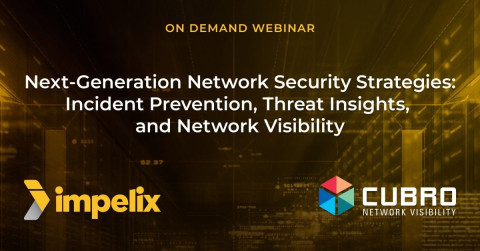-
Call Us:1.800.561.4019
Newsletter
For a Free Quote...
Latest Blog Posts
Blog Categories
Telnet Network News
State Of The Network: Analyst Jim Frey's View/ Q&A
JDSU’s Network Instruments business released its seventh annual “State of the Network Global Study.” Of the findings – after polling 241 network professionals – a provoking theme emerged: 80 percent of respondents viewed software defined networks (SDN) as unimportant or were just going to “ride out the hype” – saying it is “Like a Road Trip Without a Map.”
 A leading authority in the enterprise network management space with a lot of experience covering this sector is Jim Frey, vice president at Enterprise Management Associated (EMA), which conducts IT & data management research, industry analysis and consulting.
A leading authority in the enterprise network management space with a lot of experience covering this sector is Jim Frey, vice president at Enterprise Management Associated (EMA), which conducts IT & data management research, industry analysis and consulting.
Inspired by the recent study, I reached out to Jim – who has briefed regularly with the Network Instruments team – for his take on the state of network today as he sees it, and his view of where the market is headed.
Q: Jim, what do you feel are the top priorities – opportunities and/or challenges – for the enterprise sector at a time when SDN and Big Data are all the rage?
Looking at where SDN is in its maturation, the timing is still very early and it is not having a big impact yet. Big data – the collection, analysis and sharing of data by network management systems – is rapidly growing in importance as a company asset. Here is what I see as top priorities and megatrends as SDN and big data emerge within larger enterprises.
First, cloud and virtualization adoption rates are very high and topics to keep an eye on. The cloud is enabled by virtualization and that dynamic creates added challenges for performance monitoring. The ability to understand how services perform when deployed in the cloud, especially from an end-user perspective, makes visibility a critical – and challenging – aspect of effective resource monitoring and management.
In addition, making sense of the large amounts of network monitoring data and what can be done with it are key. In particular, we see network teams taking a more proactive approach to handle performance challenges as they find hidden trends and relationships between application and infrastructure performance using the latest big data analysis techniques.
Lastly, I’d say another big trend taking hold is the continuous market transition between separate siloes or functional areas in IT operations, moving towards more converged operations and IT organizations. This has some direct impact on choices of network management tools and how they get used over time.
Q: The “State of the Network” study spotlighted that a fair amount of network managers and engineers agree that SDN is a “Road Trip Without a Map”? Were you surprised to see that finding?
This is very consistent with the conclusion that I have had in my own research. I’ve found that only 20 percent have taken part in any degree of SDN deployments. And, less than 10 percent are in full deployment. The remaining are at the early stages of research, testing, or evaluation with many network managers still trying to figure out where and how to use it. They are asking: “Is there enough pain in my current network to warrant an alternative like SDN?” Most organizations – most mainstream enterprises – would answer, “No, not enough to warrant embracing these relatively immature technologies at this time.”
Important to note is the fact that there are two main types of SDN. One type is the overlay network, which is purely software/virtual; the other is OpenFlow-based, which we call an underlay SDN. Of the two, the virtual overlay is a more natural extension of existing virtual networks, as it uses tunneling and the existing network, so no new physical infrastructure is required. However, because it is typically managed by system administrators with little input from the network team, there are two areas of potential challenges. The first is to address network capacity planning and the second to ensure visibility into the encapsulated, tunneled traffic for satisfactory service delivery monitoring.
Q: A big takeaway seems to be that now more than ever service providers and enterprises must be equipped with technology that provides key visibility and troubleshooting. How important are these capabilities for enterprise and service providers to deliver quality services, build reliable networks?
Absolutely – as you can tell from prior answers, visibility has never been more important. In the current environment there are more layers of technology, more dynamic aspects that come with virtualization, and with that, the more you must understand what’s going on and be able to piece together the full story. For example, how is that app being delivered? From where it’s being hosted to the consumer, what’s happening along the way to make it work? And, how is the quality and efficiency, what is experience of the consumer or end user?
The picture is getting a whole lot more complex – all of the trends we have addressed – virtualization, SDN, big data, cloud...they all drive a heightened need for deep and accurate visibility.
Thanks to Network Instruments for the article.
When you subscribe to the blog, we will send you an e-mail when there are new updates on the site so you wouldn't miss them.





Comments